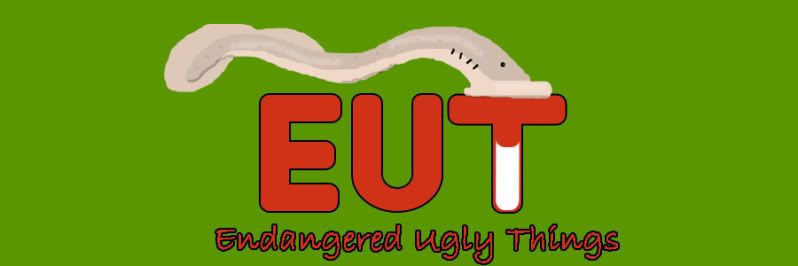Save the midges! Collect the whole set! Yes, there is an endangered species of midge, at least in Ohio. There are also five endangered snakes, four endangered amphibians, three endangered lampreys, forty-three other endangered insects, and twenty-four endangered mollusks in this state alone, all of which get slim to nil media attention. The black bear, newly reintroduced, has made local TV often, but what about the Indiana bat? Or the Allegheny woodrat?
Therein lies my goal: inform the public of species on the brink of extinction that people either do not know about or do not care about. People care about animals to which they can attach certain traits. The bald eagle is majestic, the panda is cute, the black bear is powerful. However, these traits have nothing to do with the species’ importance in nature. The midge, which is most easily equated with annoyance, is a vital food source to many larger animals.
The only way to accurately determine the necessity of a certain species is through ecological surveys, which, as a wildlife ecologist, I hope to conduct. We can only mess up nature so much and get away with it. Maybe we have already crossed that line. The only way we can know is by these environmental studies. The disappearance of a species of freshwater clam could affect nature just as much as the disappearance of a species of falcon.
To achieve this lofty goal, I plan on attending college and majoring in biology, to get a well rounded view of the field. After obtaining my bachelor’s, it is off to graduate school, where I can focus in on my desired field of study.
I have, in fact, already begun the journey toward research ecology. Throughout my high school career, I have been advocating for animals that people have problems finding cute even when they are alive. For the past four years, I have been conducting a road mortality survey of snakes in the Killdeer Plains Wildlife Area. This study involves driving all the roads in the wildlife area, which is about thirty-three miles, and recording each snake found, of which, about eighty percent are dead.
Along with the cute and cuddly species, the ugly ones, the annoying ones, and the gross ones have to be saved just as well. We cannot ignore killing things, saying, “It’s just one species of insect,” when it causes a species of fish to die, which is, “just one species of fish.” We must remember we are just one species of ape.
Looking back at it, it seems a little cheesy, especially the ending. Well, let’s look at my track record. I’ve written about two of the snakes, one of those amphibians, one of the lampreys1, and one of the insects. Remember, that’s just on the Ohio Endangered Species List2. In the first post, I talked about American Burying Beetle news posts, Ohio Lamprey plush toys, and Save the Wartyback Mussel t-shirts. Well, I only managed one of those, but if I knew how to do the other two, I would be on them before you could say Nicrophorus americanus.
One common thread you will see between the essay and the first post is the midge on the Ohio list. Its name is Rheopelopia acra, and now you know as much about it as I do. At one point, I asked Beetle Lady if she could find anything about it. She couldn’t. I asked Bug Girl if she could find anything about it. She couldn’t. There has to be something that differentiates this midge from all the rest of Diptera, since none of them are listed. On a high note, when I searched Google for the scientific name, I came up as the fifth hit, simply from a footnote on my post on the Puritan Tiger Beetle.
I’ve become more attached to this project than even I expected, and I will keep at it as long as I can keep finding ugly things that need my help3.
1The other two were non-parasitic. That’s no fun.
2From which I’ve also taken two other fish.
3“Whenever a beetle cries out from habitat loss… I will be there.
“Wherever a salamander finds a dam… you will find me.
“When a fungus finds it can go no further… there I shall be.
“For I… am a blogger!”

2 comments:
Well, now...there is certainly no picture online (but there really isn't THAT much variation in this general type of midge, so you might be able to fudge).
Check here:
http://www.esb.enr.state.nc.us/BAUwww/Chiron_manual/intro.pdf
for a very nice key that has Rheopelopia included but mainly for the into material on midges and their lifestyle (Lifestyles of the Wet and Squirmy!)And if you want more info, Dr. John Epler is the man to contact.
Also, there was a mention of them in another North Carolina key that basically said:
"Most members of this subfamily [Tanypodinae] are free swimming or crawling predators; some burrow in
bottom mud. Larvae are found in a variety of habitats, including water held by bromeliads or pitcher
plants, as well as the more normal aquatic habitats such as springs, seeps, ditches, marshes, streams,
rivers, ponds and lakes; one species is symbiotic in unionid mussels."
And this:
"The Rheopelopia acra group is apparently the most commonly encountered taxon of the genus in the Carolinas.Rheopelopia larvae are usually, as their name implies, found in running water."
Finally, as of 2006, they are found in only 2 Ohio counties: Ashtabula and Lake.
I love your site, and I love the Indiana Bat! Keep it up!
Post a Comment